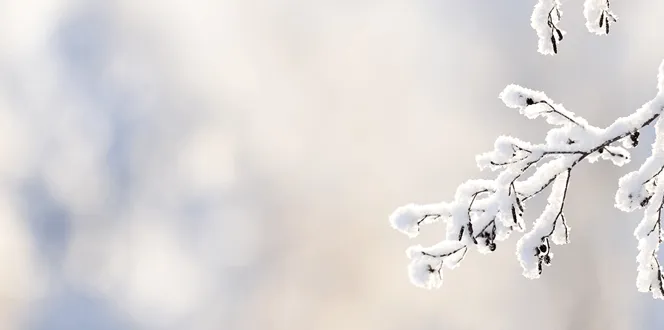When tiny pawprints in the snow lead you to a chiseled tree or shrub in your yard, you know you’ve got a hungry rabbit on your hands.
In their quest for a quick bite to eat, rabbits can leave the bottom of plants totally bark-less. Recently this happened to one of our blog readers. She reached out saying, “the resident rabbits have chewed all the bark off the lower branches of my burning bushes. Is there anything that can be done to prevent further damage? And what about the current damage—can I use pruning paint?”
Below, read about how to prevent rabbit feeding, and learn how to help an injured plant recoup.
Rabbits are eating the bark off my trees. What should I do?
If it’s common for rabbits to roam your neighborhood in winter, protecting your plants before any damage is done should be a top priority. When a tree or shrub loses its bark, it becomes immediately vulnerable to threats like pests or harsh weather, and water and nutrients can’t properly flow throughout the plant.
What type of wood can rabbits eat? Are my trees at risk?
In winter, rabbits have a taste for...nearly any plant they can get their paws on. Food is scarce in the colder season, so rabbits can’t be choosy.
Still, they do have a few favorites. Fruit and ornamental plants including crabapple, plum, cherry, apple, pear, rose and burning bush are targeted, and trees including serviceberry, honey locust, maple, and pine are also on their preferred menu.
How to protect my trees from rabbits
To prevent unwanted nibbling, you’ll need to build a barrier that stops rabbits from reaching plant bark. Here’s how:
- In fall, use chicken wire or hardware cloth to build a fence around your plant. It should be about two- or three feet tall.
- Bury the fence down a few inches into the ground so sneaky rabbits can’t crawl underneath.
- When you spot the first rabbit in winter, make sure the fence is tall enough to protect from high hoppers, and adjust if needed.
- Apply a wide range of repellents directly to the plant
Can I do anything to save a plant whose bark is already ripped off?
Certainly, the question of whether your plant will survive is top of mind. And the answer is: it depends.
One thing’s for sure—wound dressing or pruning paint won’t help your plant heal. In fact, they’ll just interfere with the plant’s natural repair process. It’s best to avoid these and follow the steps below instead.
If your shrub was damaged by rabbit feeding...
- Check for healthy bark below the chewed area.
- Prune damaged stems down to the fresh bark if there is any.
- Wait for new growth. And be patient! It can take a really long time for your shrub to restore itself, in some cases, 2-plus years.
- Protect your shrub from further damage using the fencing method above.
- Apply repellents
If your tree was damaged by rabbit feeding...
It'll have a hard time bouncing back, or in the worst case won’t recover at all. If the damage goes, say, ¼ of the way around the trunk or less, keep an eye on your tree to see if it heals naturally over the next few seasons. If damage runs about halfway around the trunk, there’s a smaller chance the tree will survive, but no harm in waiting to see what happens. Or, if you’d rather not deal with the suspense, get an arborist’s opinion.
Trees that have been chewed all the way around the trunk more than likely won’t survive. In this case, the best next step is to remove and replace the tree





